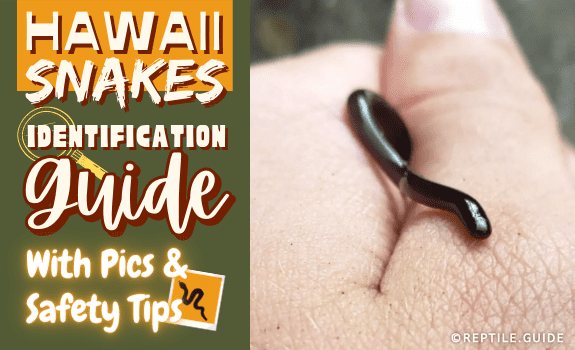Hawaii is one of the few states in the US that doesn’t have a proliferation of snakes.
As a volcanic island that formed independently from other landmasses, it has no native snakes. However, there are several species of introduced snakes in Hawaii.
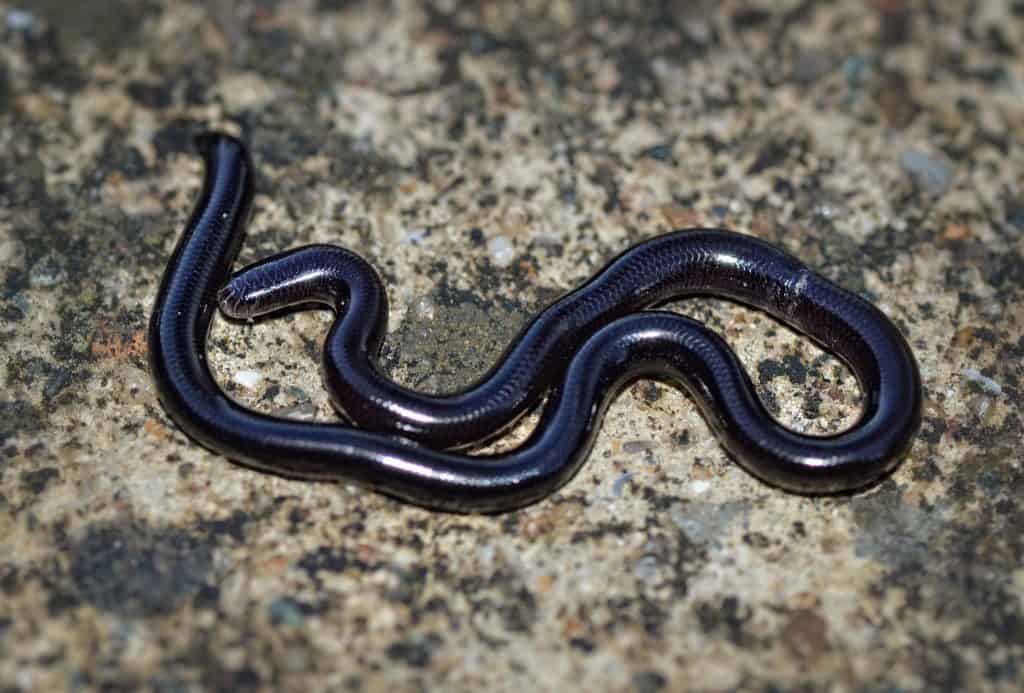
Image credit: AlexandreRoux01 (via CreativeCommons.org)
In This Article
In Short
In this article, we’ll take a closer look at:
- How to manage encounters with snakes in Hawaiian islands
- How to distinguish the venomous species from the harmless ones
- The basics of identifying snakes in Hawaii, and the most common species
It would be wise to remember that:
- Snakes aren’t out to get you
- If you treat snakes with respect, they’ll leave you alone
- When hiking, you should always remain vigilant in case you encounter snakes
Does Hawaii Have Snakes?
The answer is yes.
It’s a common myth that the Hawaiian islands don’t have snakes. We get bombarded with questions like “Are there snakes in Hawaii?” and “Does Hawaii have snakes?”
While it’s true that none of the snakes in Hawaii are native species, several species of snake either make their home in the islands or find their way there on occasion.
It’s worth noting that it’s illegal to have a pet snake in Hawaii.
Since they have no natural predators on the island, they can decimate populations of native lizard species and endangered birds.
As a result, any snakes found on the island are killed or shipped elsewhere. The Brahminy blind snake is an exception since it’s too small to cause damage, and feeds on ants.
Snake Identification Basics
In an isolated region like Hawaii, where there are few snakes to distinguish between, identification is slightly easier than in some other places.
Let’s take a look at the most essential characteristics that will help you identify any snake you encounter.
Length
The length of the snake is one of the most defining characteristics when identifying a snake.
Species like the garter snake, which sometimes slips onto the island in import containers, reach lengths of over 40 inches. Meanwhile, species like the Island blind snake rarely reach 20 inches.
Naturally, if you see a long snake, you can instantly discount the island blind snake.
Locality and Habitat Type
In the Hawaiian islands, the locality is perhaps not as definitive as in other states.
Since all the species are introduced, their ranges aren’t as defined as they normally would be.
However, experts in the area are still likely to know where established invasive populations exist.
The habitat also plays an immense role in identification. You’re more likely to find an island blind snake in soft soil, than anywhere else.
However, the yellow-bellied sea snake will only turn up at the coast, and the brown tree snake lives in vegetation.
Head and Pupil Shape
Each group of snakes has a unique head shape, and there are several different types of reptile eyes as well. These two characteristics help narrow down the species.
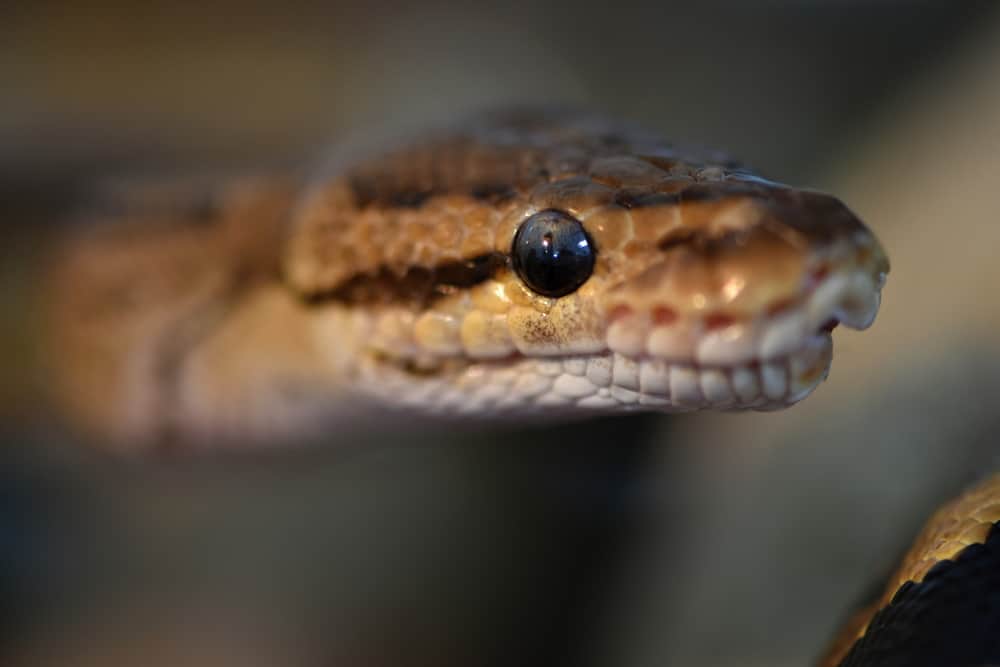
Most of the snake species on the island have round pupils, but brown tree snakes have slit-shaped pupils.
Pythons have large, broad heads, while the Island blind snake has a blunt, rounded head. All the species in Hawaii have unique head shapes.
Color and Patterning
Coloration and patterning can vary greatly even within a single species. However, the color can tip you off about which snake you’re seeing.
For example, the yellow-bellied sea snake is the only black and yellow snake you’re likely to encounter.
Quickly Identifying Venomous Species
There are only two species of dangerous snakes in Hawaii:
- The brown tree snake
- The yellow-bellied sea snake
It’s easy to identify either of these snakes, thanks to their distinctive appearances.
Identifying Brown Tree Snakes
The brown tree snake is easy to identify, thanks to its unique appearance. It has:
- Slit-shaped pupils
- A short, broad, slightly flattened head
- A long, brown body leading to a slender neck
Identifying Sea Snakes
The yellow-bellied sea snake in Hawaii has several defining characteristics, namely:
- A large head with round pupils
- A fin-shaped tail for swimming
- Violent black and yellow coloration
Which Snakes Live in Hawaii?
There are only seven species of snakes in Hawaii that you’re likely to encounter. Some other snakes sometimes slip into the state, but they’re not common.
Brown Tree Snake
The brown tree snake is the most dangerous snake you’re likely to encounter in Hawaii.
The Hawaii Department of Wildlife intentionally imported sterile males of this species. They used the animals to help train dogs to look for these animals.
On the island of Guam, these snakes decimated populations of endangered birds. Hawaiian officials have taken steps to ensure that these animals don’t get established.
As far as anyone knows, only the original quartet of snakes lives on the island still.
|
Scientific Name: |
Boiga irregularis |
|---|---|
|
Range: |
Native to Papua New Guinea Sterile males were intentionally introduced to Hawaii where they roam freely |
|
Adult Size: |
Up to 10 feet in length |
|
Description: |
A long, brown snake with gray and tan speckles Has a long narrow neck, broad head, and slit-shaped pupils |
|
Habitat: |
Forests and other vegetated areas |
|
Venomous/Non-Venomous: |
Venomous |
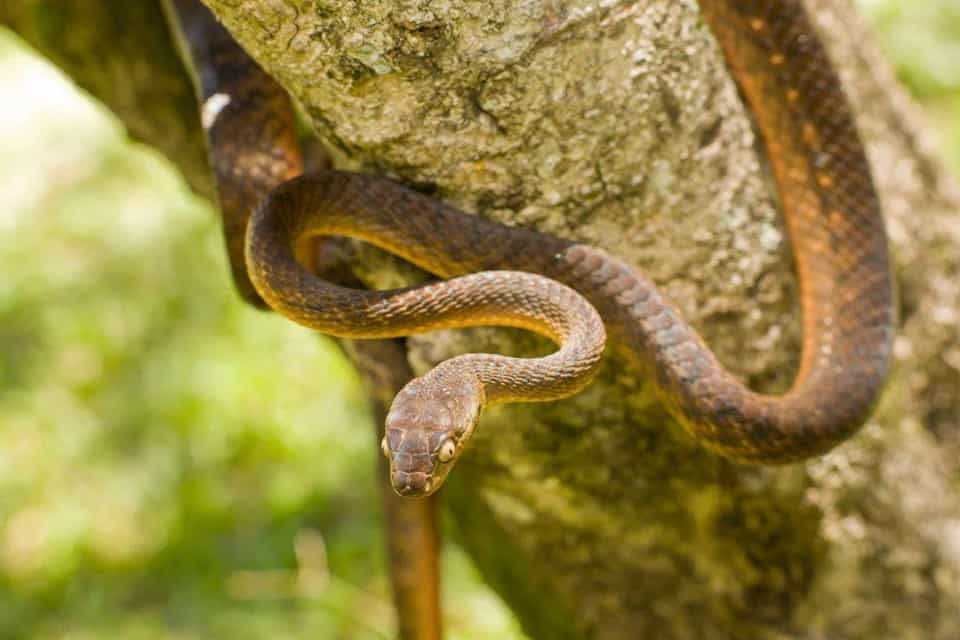
Image credit: u/ImagesOfNetwork (via Reddit.com)
Yellow-Bellied Sea Snake
This yellow-bellied snake is a cosmopolitan visitor to various coastlines around the world.
While you’re unlikely to spot one, they live in the ocean and travel on pelagic currents and have been spotted in Hawaii.
This snake is in the family Elapidae, to which cobras also belong, and have a deadly bite.
|
Scientific Name: |
Hydrophis platurus |
|---|---|
|
Range: |
Around the world, travels on Pelagic ocean currents |
|
Adult Size: |
Up to 35 inches |
|
Description: |
A thick-bodied black snake with a yellow belly Black-and-yellow-spotted tail shaped like a paddle to aid in swimming |
|
Habitat: |
Pelagic currents May be seen along the coast |
|
Venomous/Non-Venomous: |
Venomous |
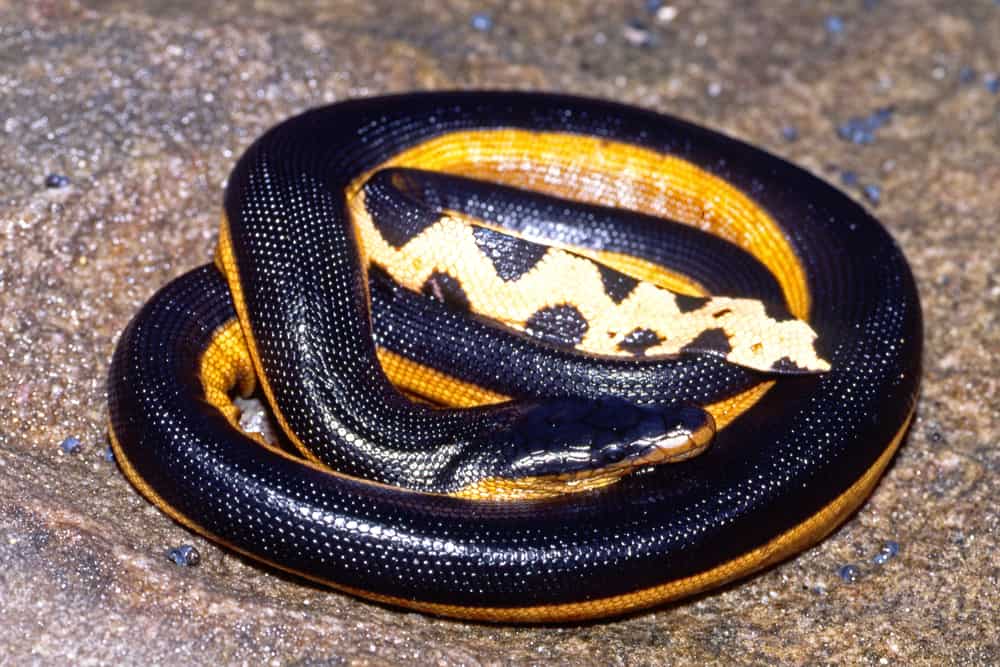
Brahminy Blind Snake
The Brahminy blind snakes are some of the most common snakes in Hawaii.
Officials haven’t made any major efforts to eradicate the Brahminy blind snake as it poses no threat to native species.
|
Scientific Name: |
Indotyphlops braminus |
|---|---|
|
Range: |
Originally from India, now around the world, including all Hawaiian islands |
|
Adult Size: |
Up to 6.5 inches |
|
Description: |
Brown, gray, or purple A short snake that resembles an earthworm Tiny eyes and a rounded head and tail exaggerate the effect |
|
Habitat: |
Anywhere with soft soil |
|
Venomous/Non-Venomous: |
Non-venomous |
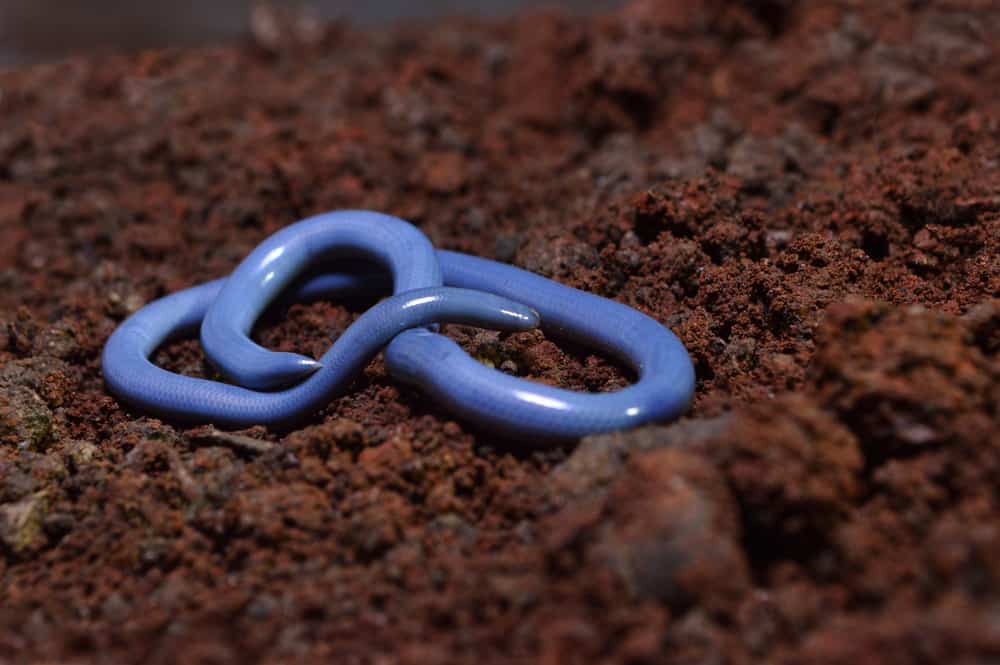
Corn Snake
The corn snake is a harmless, and popular, pet in many parts of the world. Unfortunately, as an invasive species in Hawaii, it poses a threat to the natural ecosystem.
|
Scientific Name: |
Pantherophis guttatus |
|---|---|
|
Range: |
Native to the southeastern USA, accidentally introduced to parts of Hawaii |
|
Adult Size: |
Up to 5.97 feet |
|
Description: |
Round pupils, and a relatively long, narrow head A long thin snake that may be brown or orange with white or tan markings If the animal escaped from captivity, it may resemble any of the corn snake morphs |
|
Habitat: |
Generalist, but prefers grassy areas |
|
Venomous/Non-Venomous: |
Non-venomous |
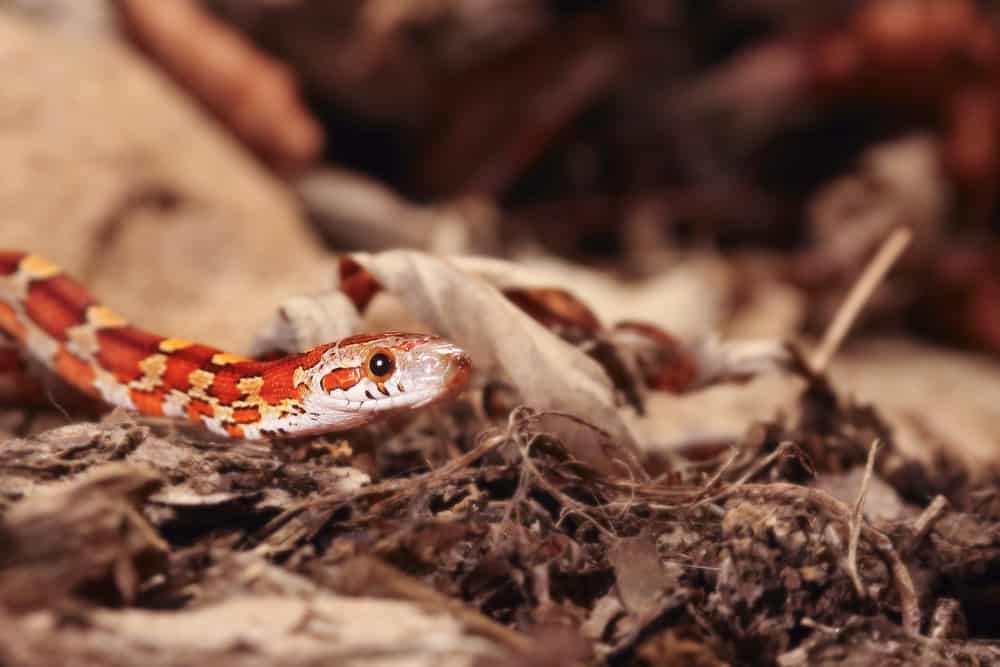
Ball Python
The ball python is a medium-sized constrictor with a healthy appetite. It could pose a serious risk to seabird populations, as the chicks are the perfect size for them to eat.
|
Scientific Name: |
Python regius |
|---|---|
|
Range: |
Native to Africa May have been accidentally introduced to parts of Hawaii |
|
Adult Size: |
Up to six feet |
|
Description: |
A thick-bodied snake with a large head Typically brown, but may resemble any of the ball python morphs if it’s an escaped pet |
|
Habitat: |
Prefers forests and woodlands near water |
|
Venomous/Non-Venomous: |
Non-venomous |
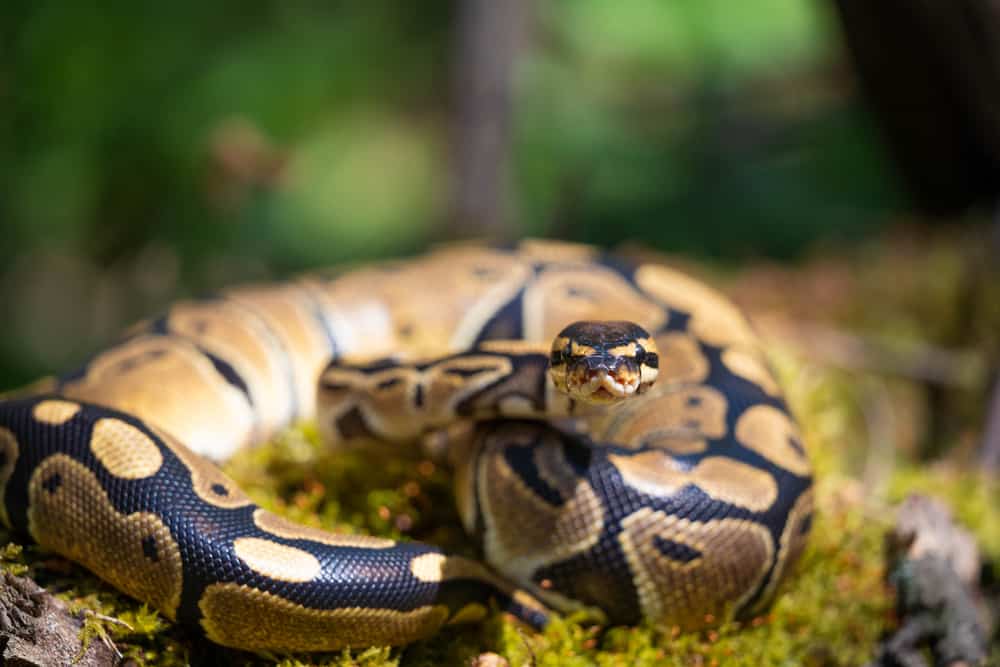
Gopher Snake
The Gopher snake is an avid predator of small animals that could be a lethal problem if it’s established in Hawaii. Fortunately, the only gopher snakes so far have been lone stragglers.
|
Scientific Name: |
Pituophis catenifer |
|---|---|
|
Range: |
Native to the USA, occasionally found on shipments of imported goods in Hawaii |
|
Adult Size: |
Up to 5.75 feet |
|
Description: |
Long, robust snake with a large head and round pupils A light tan color with darker brown, triangular or diamond-shaped, markings |
|
Habitat: |
Generalist, anywhere from gardens to forests |
|
Venomous/Non-Venomous: |
Non-venomous |
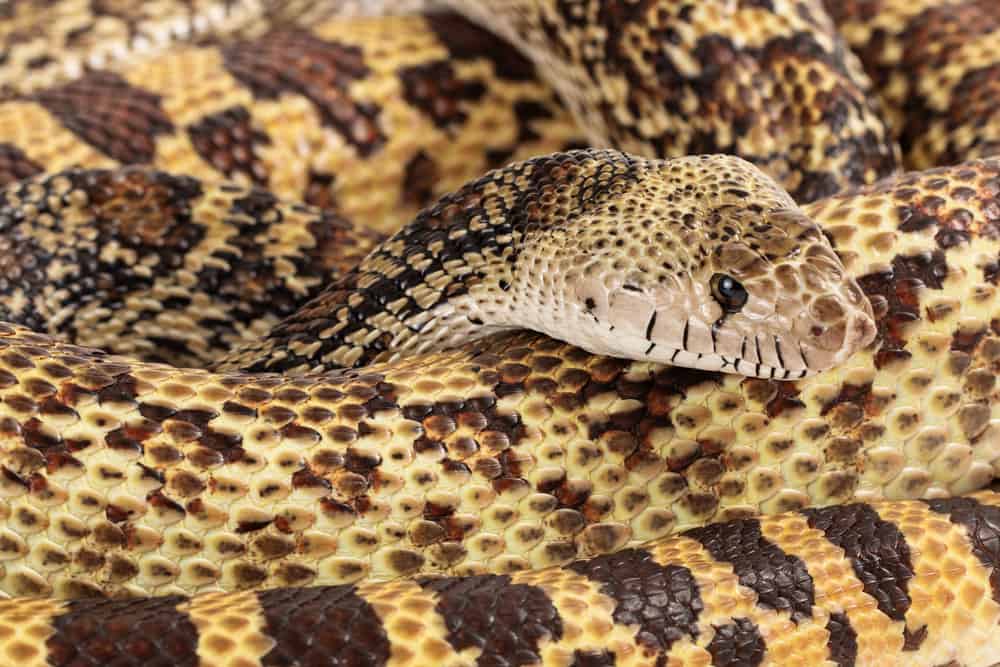
Boa Constrictor
The boa constrictor is a large-bodied and robust constrictor that poses a serious risk to the natural ecosystem in Hawaii.
Originally, there was only a spotting once in a while. Unfortunately, these spottings have been increasing in frequency.
If the boa constrictor manages to establish itself and lay eggs, the native wildlife will be in danger.
|
Scientific Name: |
Boa constrictor |
|---|---|
|
Range: |
Native to South and Central America Sometimes spotted in the jungles of Hawaii, thanks to accidental introductions |
|
Adult Size: |
Up to 10 feet |
|
Description: |
A robust, thick-bodied snake with a large head Light brown with darker brown markings |
|
Habitat: |
Forests and woodlands |
|
Venomous/Non-Venomous: |
Non-venomous |
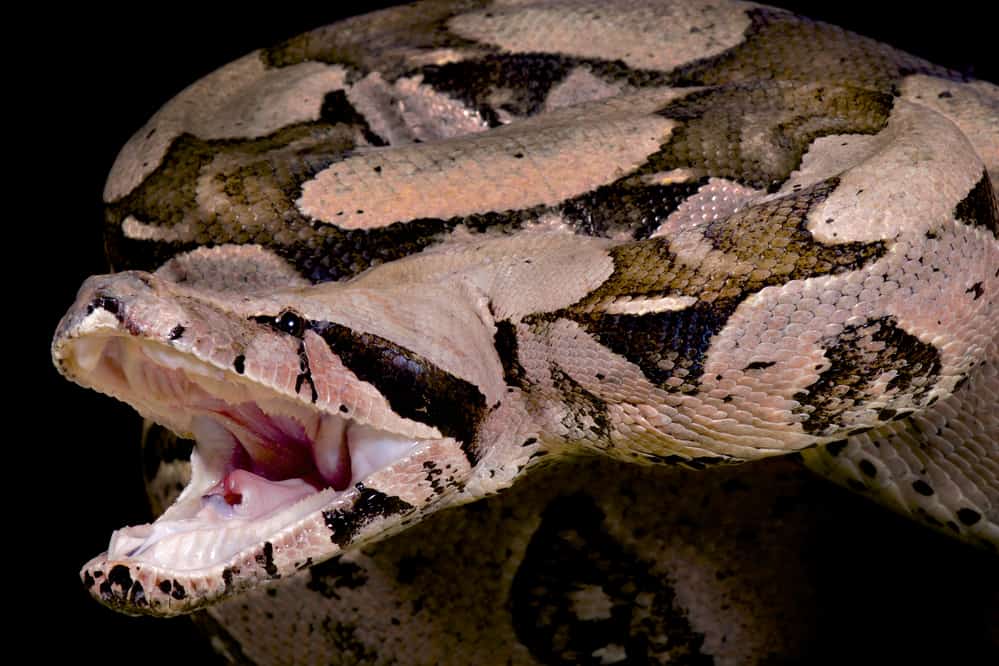
Garter Snake
The garter snake isn’t a common visitor in Hawaii, but it has popped up several times in shipments of imported goods.
|
Scientific Name: |
Thamnophis sirtalis |
|---|---|
|
Range: |
Western, Central, and Eastern US; Occasionally arrives in Hawaii in shipments of imported goods |
|
Adult Size: |
Up to 55 inches |
|
Description: |
Broad, flat head with round pupils A long snake that tapers to a thin tail Brown with three light brown stripes flanked by black dots |
|
Habitat: |
Habitat generalists |
|
Venomous/Non-Venomous: |
Non-venomous |
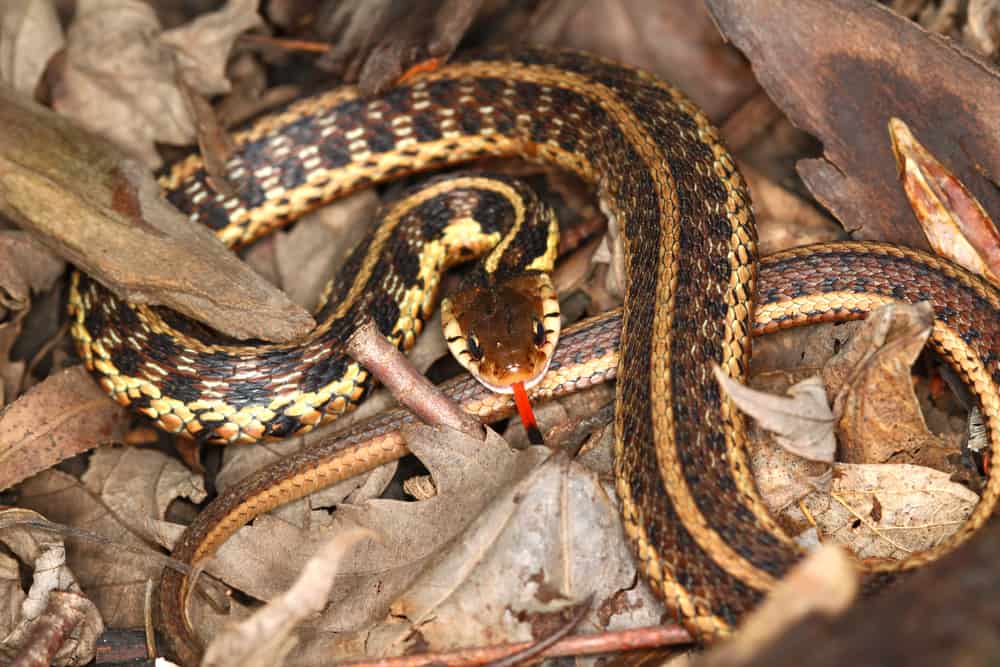
What You Need to Know
Snakes aren’t a part of the native habitat in Hawaii. Any snake, except the Brahminy blind snakes, poses a risk to this delicate ecosystem.
As a result, snakes are illegal animals. While it’s unlikely that a snake will harm you, you need to alert the authorities so that they can remove the animal.
Coexisting with Hawaii Snakes
The only snakes in Hawaii that you need to coexist with are the Brahminy blind snakes and the Yellow-bellied sea snakes.
The yellow-bellied sea snake naturally occurs in the Hawaiian waters. Fortunately, this species rarely leaves the ocean.
One precaution you should take is to avoid swimming in densely vegetated waters.
For the blind snake, you don’t need to take any precautions. It’s the smallest snake in the region, and harmless. It travels the world in potting soil along with plant exports.
You shouldn’t try to coexist with any of the accidentally introduced species but should alert the authorities.
Snake Safety 101
Whenever entering a habitat where snakes are likely to dwell, there are precautions you can take to protect yourself.
While most of the snakes in the region are non-venomous, it’s still a good idea to stay safe.
Here’s what you can do to keep yourself and your loved ones safe:
- Wear sturdy shoes when out hiking or jogging
- Stick to well-used paths and avoid overgrown areas
- Keep your pets on leashes and your children close to you

About Venomous Snakes
The only venomous snakes in the region live in the ocean or deep vegetation.
Brown tree snakes are entirely arboreal, and you’re unlikely to encounter them outside densely planted areas. They’ll try to avoid you, if they can, so you’re unlikely to meet one.
Yellow-bellied sea snakes don’t usually emerge from the ocean, so you’re unlikely to see them. If you do see them, it will probably be while swimming or on a boat.
Naturally, if you see this highly venomous snake in the water, don’t get into the water. Also, avoid swimming in areas with plenty of seaweed (since you might not see the snake).
If You Encounter a Snake
If you encounter a snake somewhere in Hawaii, call the Wildlife Commission. They’ll send someone to remove the snake and help keep the ecosystem safe.
Don’t try to catch or kill the snake, just back away and keep an eye on it while calling in the snake’s location.
Unfortunately, keeping snakes is illegal in the islands because the natural ecosystem is so fragile here.
Accidentally introduced species need to be removed to protect small mammals and native birds like the Oahu petrel.
When to Call for Help
In most cases, I’d warn you off calling help unless you’ve been bitten or the snake is at risk of getting hurt or hurting somebody.
However, in Hawaii, even the most innocuous-seeming snake can cause a serious problem for local wildlife. ALWAYS call in snake sightings to the Hawaii Wildlife Commission.
The only exception to this is the Brahminy blind snake. These snakes pose no risk to native wildlife populations.
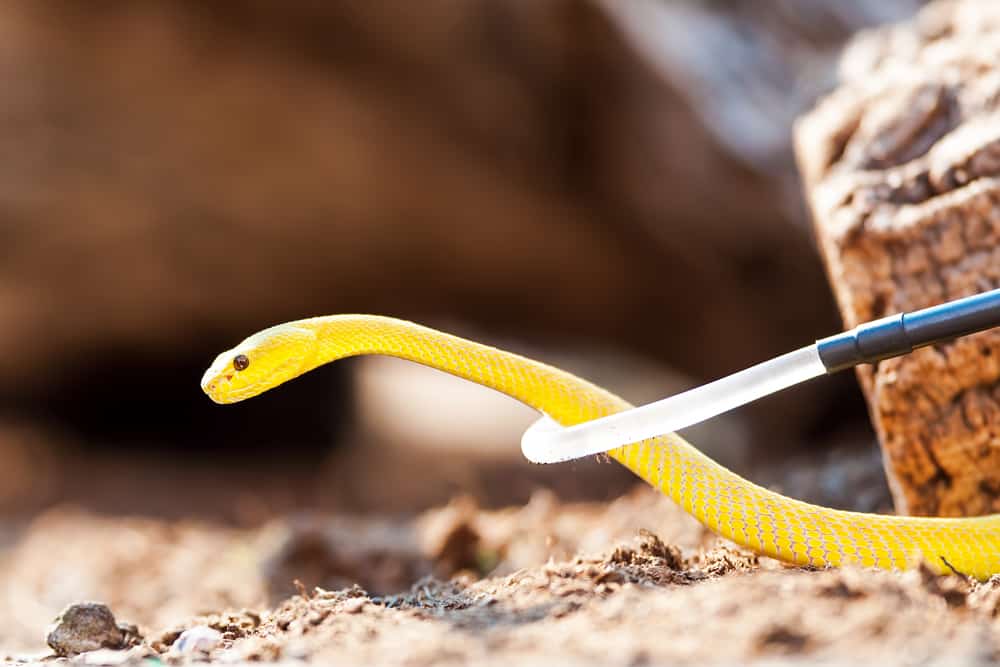
Useful Resources
I’ve constructed a list of useful resources that you can use when you encounter a snake or need to manage your interactions with them.
Emergency Poisoning Advice
- Poison Control Center’s national hotline: 1-800-222-1222
- ASPCA Poisoning Hotline: 1-888-426-4435
Snake Removal Services
When you need to have a snake removed, contact your regional division of the Hawaii Department of Land and Natural Resources – Division of State Parks.
They’ll be able to connect you to the relevant person.
Educational Resources
The Education and Resources page at the Hawaii Department of Land and Resources can teach you a lot about the Hawaiian ecosystem.
iNaturalist is a fantastic website for identifying and learning about wildlife. Check it out to learn more about native wildlife.
Related Articles
If you’re interested in identification guides for other states, check out my:
- Turtle Identification Guide
- Texas Snakes Identification Guide
- California Lizards Identification Guide
You can also check out my other articles about snakes – we have vital guides that you can learn from!
